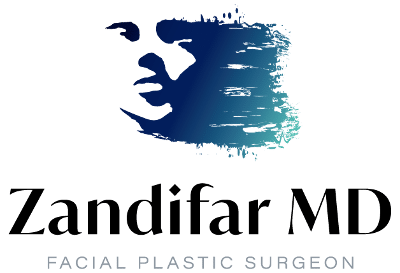Facial asymmetry is a common concern for many people. While perfect symmetry is rare, pronounced facial asymmetry can impact self-confidence and, in some cases, even function. Fortunately, advancements in cosmetic procedures offer both surgical and non-surgical options to address this issue. Choosing between these approaches depends on various factors, including the severity of asymmetry, desired results, recovery time, and personal preference. Here, we will explore both surgical and non-surgical methods for correcting facial asymmetry, providing you with valuable insights to make an informed decision.
What Causes Facial Asymmetry?
Before diving into the treatment options, it’s essential to understand the potential causes of facial asymmetry. While some degree of asymmetry is natural, certain factors can lead to noticeable differences in facial features. These factors include:
- Genetics: Many people are born with facial asymmetry due to hereditary factors.
- Trauma or Injury: Accidents or injuries can result in changes to the facial structure, causing asymmetry.
- Lifestyle Habits: Habits like chewing on one side of the mouth or sleeping on one side consistently can contribute to uneven facial development.
- Medical Conditions: Conditions like Bell’s Palsy or hemifacial microsomia can result in facial asymmetry.
- Aging: As we age, bone density and fat distribution change, which can contribute to asymmetry over time.
Understanding the underlying cause of facial asymmetry can help you decide which treatment option may be the most effective for your unique situation.
Surgical Approaches to Correct Facial Asymmetry
Surgical procedures are generally considered for more significant cases of facial asymmetry, especially when bone structure adjustments are necessary. Here are some of the common surgical options:
1. Orthognathic Surgery
Orthognathic surgery, also known as jaw surgery, is a procedure that corrects alignment issues within the jaw. It is typically performed by an oral and maxillofacial surgeon and may involve repositioning parts of the upper or lower jaw. This surgery is particularly beneficial for patients with severe jaw misalignment, underbites, overbites, or crossbites that contribute to facial asymmetry.
- Benefits: Provides permanent results and corrects functional issues related to bite and speech.
- Considerations: Recovery can be extensive, often involving several weeks, and may require wearing braces pre- and post-surgery.
2. Facial Implants
Facial implants, such as chin or cheek implants, can be used to add volume and balance to areas lacking symmetry. These implants are typically made of biocompatible materials and are placed under the skin to enhance the facial structure.
- Benefits: Long-lasting solution with minimal maintenance required after recovery.
- Considerations: There is a risk of infection or shifting of the implant, and it requires general anesthesia.
3. Rhinoplasty
Rhinoplasty, commonly referred to as a “nose job,” is a surgical procedure to reshape the nose. For patients with nasal asymmetry, this surgery can help improve facial harmony. The procedure may involve bone and cartilage reshaping, depending on the specific concerns.
- Benefits: Provides a permanent solution for nasal asymmetry, improving facial balance.
- Considerations: Requires downtime for recovery and carries risks associated with anesthesia and potential breathing difficulties post-surgery.
Non-Surgical Approaches to Correct Facial Asymmetry
For those who prefer a less invasive approach, non-surgical options can provide effective results with minimal downtime. Here are some popular non-surgical treatments:
1. Dermal Fillers
Dermal fillers are injectable treatments that use substances like hyaluronic acid to add volume to areas of the face that may be lacking. They are commonly used to correct asymmetry in the cheeks, lips, and jawline.
- Benefits: Minimal recovery time, immediate results, and relatively low risk.
- Considerations: Results are temporary, lasting between 6 to 18 months, depending on the filler type used.
2. Botox
Botox is a popular injectable treatment that works by relaxing muscles. It can be used to address asymmetry caused by muscle imbalances, particularly around the eyes and mouth. Botox is often used in conjunction with fillers for a more comprehensive non-surgical solution.
- Benefits: Quick procedure with results visible within days; minimal discomfort.
- Considerations: Results are temporary, lasting around 3 to 6 months, and require repeat treatments to maintain.
3. Ultherapy
Ultherapy is a non-invasive treatment that uses ultrasound technology to stimulate collagen production, tightening and lifting the skin. This method can help correct minor asymmetries caused by sagging skin or loss of skin elasticity.
- Benefits: Non-invasive with no downtime, and results improve over time as collagen builds.
- Considerations: Best suited for mild asymmetry; results may not be as dramatic as surgical options.
Choosing the Right Approach for You
Deciding between surgical and non-surgical approaches to correct facial asymmetry ultimately depends on your goals, the extent of asymmetry, and personal considerations such as budget and willingness to undergo surgery. Surgical methods are best for those seeking permanent and dramatic changes, especially when structural adjustments are necessary. Non-surgical options, on the other hand, are ideal for those looking for minimal downtime, temporary solutions, or subtle improvements.
If you’re unsure which route is best for you, scheduling a consultation with a skilled and experienced cosmetic surgeon can help. They can assess your unique facial structure, discuss your goals, and recommend a tailored approach to meet your needs.
Conclusion:
Facial asymmetry can affect not only appearance but also self-confidence. Fortunately, there are numerous options available to address this concern, ranging from quick, non-invasive procedures to comprehensive surgical solutions. By understanding the advantages and limitations of each method, you can make an informed decision that aligns with your desired outcomes.
If you’re ready to explore the options and find the best approach for correcting facial asymmetry, contact us at Zandifar, MD. Our expert team is here to guide you through the process, answer any questions, and help you take the first step towards a more balanced and confident appearance. Schedule your consultation now to start your journey towards facial harmony!

